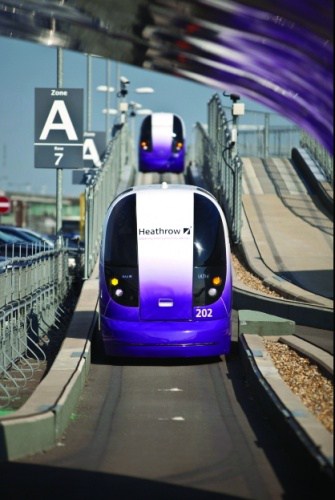Earlier this summer London black cab drivers brought sections of the capital to a standstill as they protested against the Uber service; an app that lets users hail a cab and agree a fare at the touch of a smartphone button.
Their objections centre on claims that the app enables drivers who haven’t gone through the rigours of “the knowledge” and the cost of acquiring a black cab license to operate what is effectively a metering system – which only licensed cab drivers are allowed to use.
Whilst the attractions of the technology are obvious, it’s easy to see why cab drivers are so upset. However, according to a report out this week, there could be worse to come, as the mobile route-planning technology that underpins systems like Uber helps to usher in unmanned urban transport technology that might one day take the human completely out of the loop.
Produced by transport guru Professor David Begg the wide-ranging report, entitled “A 2050 vision for London” considers the impact that the rise of autonomous transport systems might have on UK cities, and in particular London.

Begg’s report considers the potential impact and credibility of a range of autonomous transport systems: from rail – which is already embracing increasing levels of autonomy – to the much-vaunted driverless car.
current levels of city car use are going to be unsustainable
On the latter, he concludes that despite its potential to make the roads safer and improve traffic flows, it could be decades before the technology for fully autonomous driving is widely available. Even then, given the huge technical challenges operating in complex unpredictable urban environments, the driverless family car is likely to have more of an impact on life outside our cities.
The report also suggests that with the population of London set to increase to around 12 million by 2050, current levels of city car use are going to be unsustainable, and the goal should really be to reduce car ownership by making forms of public transport more attractive and flexible.
Which is where the pod car comes in: a futuristic urban transport system that many believe could ultimately marry the comfort and flexibility of the personal vehicle with the availability of practicality of public transport.
The concept has been discussed for decades, and to be fair still tends to be viewed as a curiosity championed by an enthusiastic fringe, but things may be beginning to change: a network of pods running on guide-ways has been ferrying passengers from Heathrow airport’s carpark to Terminal 5 for the past 2 years, whilst, as previously reported in The Engineer, the UK town of Milton Keynes will soon host one of the biggest urban trials of the technology.

And whilst so far the applications of Pod vehicles have been limited many believe that the emergence of the smart phone coupled with the rise of autonomous technology, and the advent of powerful route planning algorithms, could help the concept evolve into a truly compelling offering. Indeed, Begg’s report claims that technology could be at the heart of an on demand service which combines the cost benefits of route-sharing with the flexibility of taxi-travel.
Clearly, cabbies probably don’t need to start considering an alternative career yet, and there are a host of technical challenges to overcome before the technology moves beyond what are currently tightly controlled small scale installations, but it’s inevitable that mobile systems and autonomy will reshape the way we get from A to B and this latest report offers an intriguing glimpse of what that world might look like.




Swiss geoengineering start-up targets methane removal
No mention whatsoever about the effect of increased methane levels/iron chloride in the ocean on the pH and chemical properties of the ocean - are we...